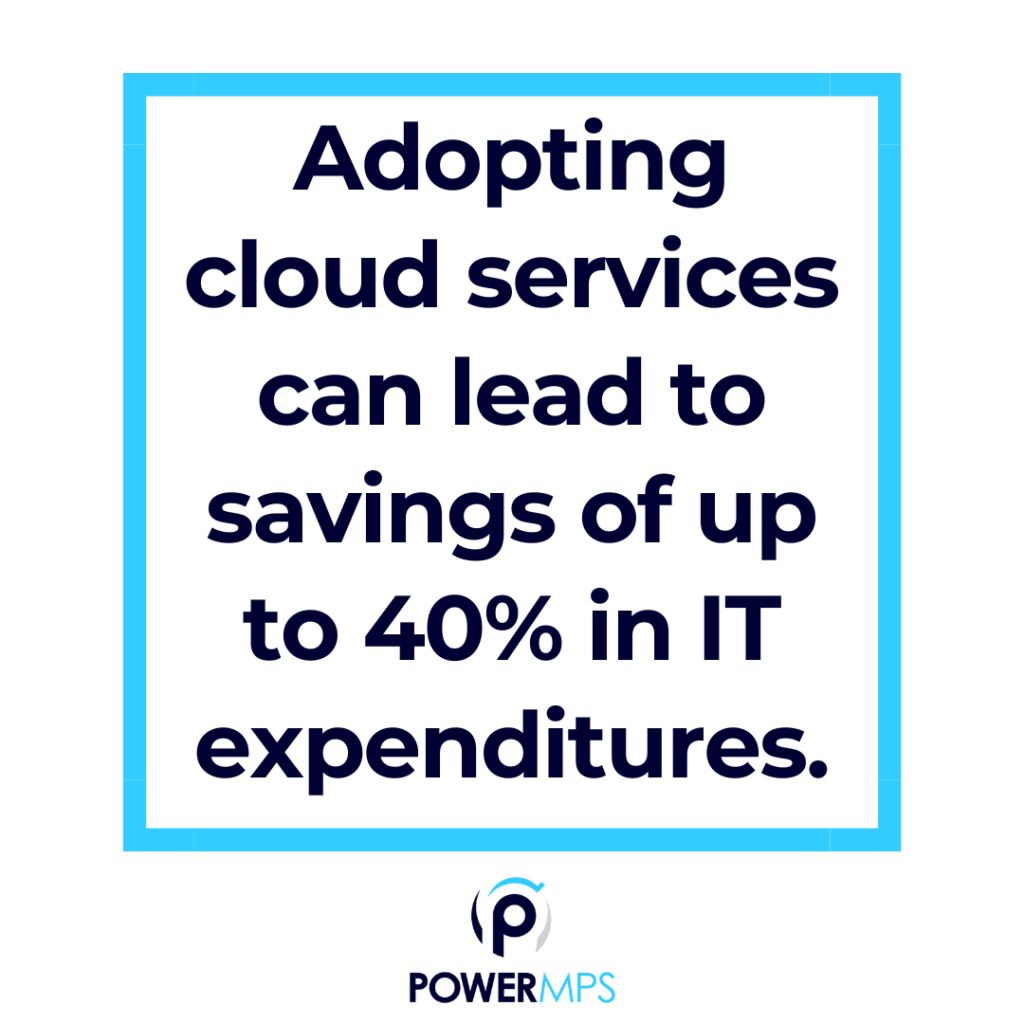In an era marked by rapid technological evolution, Chief Technology Officers (CTOs) continually seek innovative ways to bolster their companies’ bottom lines through smart, strategic decision-making. Navigating this digital transformation, CTOs are uniquely positioned to identify and implement cost-saving measures that optimize operations and drive future growth. From cloud computing to the democratization of app development, the avenues for achieving financial efficiency are diverse and promising.
A forward-thinking approach, focusing on leveraging technology to streamline processes and reduce overhead, has become vital for businesses striving to maintain competitiveness and resilience. This involves adopting new technologies and reimagining how existing resources can be more effectively utilized. The challenge for CTOs lies in balancing the push for innovation with the imperative of cost savings, a delicate act that demands both insight and ingenuity.
This blog post explores five strategic ways CTOs can save their businesses money. It showcases the potential of embracing low-code/no-code platforms as a transformative tool for rapid, cost-effective development.
Leverage Cloud Computing
 Cloud computing significantly shifts how businesses approach their operational infrastructure, providing a flexible and cost-efficient solution. According to Accenture, adopting cloud services can lead to up to 40% savings in IT expenditures. This model, which charges businesses only for their resources, significantly reduces the financial strain of maintaining in-house servers and lowers data center costs.
Cloud computing significantly shifts how businesses approach their operational infrastructure, providing a flexible and cost-efficient solution. According to Accenture, adopting cloud services can lead to up to 40% savings in IT expenditures. This model, which charges businesses only for their resources, significantly reduces the financial strain of maintaining in-house servers and lowers data center costs.
Cloud platforms are incomparable in their agility, offering the ability to adjust resources quickly in response to demand. This flexibility prevents overspending on unused capacities, ensuring that costs directly reflect actual needs. Furthermore, the cloud enhances global workforce mobility, enabling efficient work from any location and lessening reliance on physical office space.
Cloud computing also drives organizational innovation. Making powerful computing resources more accessible encourages exploring new ideas and quicker development of new products and services. This approach offers long-term savings and places businesses in a better position to seize market opportunities and navigate challenges.
Optimize Software Licensing
In an era where software is central to business operations, managing software licensing efficiently is crucial for CTOs aiming to reduce costs. As reported by 1E, the average enterprise wastes 38% of its software budget on unused or underutilized licenses. The path to optimization begins with a comprehensive audit of existing licenses, identifying opportunities to eliminate redundant or non-essential software. This streamlines operations and ensures financial resources are directed towards tools that deliver value.
Negotiating software agreements and deploying software asset management (SAM) tools form the backbone of effective license management. Negotiating terms that align with actual usage can significantly reduce costs, while SAM tools offer insights into deployment patterns and compliance status. This dual approach aids in circumventing the common pitfalls of over-licensing and ensures adherence to licensing terms, mitigating the risk of costly penalties.
An agile licensing strategy—one that is regularly revisited and recalibrated—can keep pace with the dynamic nature of business and technological innovation. Regular evaluation of software needs against the licensing portfolio enables organizations to adapt to changing demands, ensuring that investments in software licensing are both reasonable and impactful. This continuous refinement process not only optimizes expenditures but also fortifies the operational agility of the organization.
Adopt Remote Work Policies
The pivot towards remote and hybrid work models has opened new avenues for cost savings within businesses. A pivotal study by Global Workplace Analytics reveals that companies can save an average of $11,000 annually for every employee who works remotely half of the time. This cost reduction is primarily attributed to decreases in real estate expenses, utility bills, and operational costs associated with maintaining a physical office space.
Remote work policies offer efficiency gains beyond direct financial savings. The flexibility of working from anywhere fosters an environment where employee productivity and satisfaction can rise, potentially reducing turnover and the associated costs of hiring and training new staff. Additionally, companies can tap into a wider talent pool, unbounded by geographic limitations, leading to better hiring outcomes and further indirect cost savings.
However, remote work policies require thoughtful planning and the right technological infrastructure. Investing in secure, reliable communication and collaboration tools is critical to ensure that teams remain cohesive and can operate effectively in a dispersed work environment. By strategically leveraging remote work, CTOs can lead their companies to significant savings while maintaining, or even increasing, productivity and employee morale.
Streamline IT Operations with AI
Incorporating Artificial Intelligence (AI) in IT processes represents a significant shift toward optimizing performance and minimizing costs. AI enables the automation of routine activities, predicts system outages, and streamlines resource management, revolutionizing the IT framework. This advancement not only refines operations but also significantly reduces the dependency on manual tasks, therefore lowering operational expenses. According to a report by Accenture, AI has the potential to enhance profitability by 38% across various industries through increased operational efficiency.
AI’s machine learning and predictive analytics application allows for early detection of issues, averting costly interruptions and security incidents. This proactive approach in IT management helps conserve potential revenue and safeguard the company’s reputation. Utilizing AI to monitor networks and bolster security gives businesses a crucial advantage in the rapidly advancing digital realm.
The strategic use of AI enables IT staff to pivot from mundane maintenance tasks to engaging in innovation. Rather than being occupied with day-to-day troubleshooting, IT teams can contribute to strategic projects promoting business expansion and fostering innovation. This shift enhances the efficiency of IT resources while infusing the organization with a culture of innovation and forward-thinking.
Harness the Power of Low-Code/No-Code Platforms
The emergence of low-code and no-code platforms is transforming app development, unlocking rapid innovation at reduced costs. These platforms allow even those with minimal coding skills to build and roll out apps, democratizing app creation. The result dramatically accelerates the development process, enabling businesses to deliver projects much faster. Forrester highlights that low-code platforms can multiply development speed, presenting a budget-friendly option for companies aiming for agility in a competitive arena.
This innovation breeds a culture of constant improvement within companies. By facilitating fast testing, iteration, and deployment of apps, businesses can swiftly adapt to shifts in the market and consumer demands. Such speed is essential for staying ahead in the market and fostering growth without the substantial expenses tied to traditional development approaches.
Low-code and no-code platforms encourage collaboration across different departments. They invite non-technical team members into the development sphere, narrowing the divide between IT and other business areas. This ensures projects are more aligned with overall business goals. The cooperative nature of these platforms simplifies processes, minimizes hold-ups, and harnesses group know-how for more effective, cost-saving outcomes.
Forward-Looking Strategies for Cost Efficiency
The journey through modernizing business operations and reducing costs is fraught with challenges, yet it presents numerous opportunities for innovation and efficiency. The role of the CTO has never been more critical, serving as both navigator and strategist in the quest for sustainable growth and financial stability. The approaches outlined, from leveraging cloud computing to harnessing the power of low-code/no-code platforms, represent a blend of cutting-edge technology and strategic foresight. These methods aim to reduce operational costs and foster an environment conducive to innovation and adaptability.
In navigating the future, the ability to adapt and innovate while maintaining a keen eye on financial efficiency will distinguish the leaders from the followers. The strategies discussed offer a roadmap for CTOs and business executives willing to embrace change and lead their organizations toward a more efficient, agile, and cost-effective future. The potential for savings and growth lies not just in the technology itself but in how creatively and effectively it’s deployed to meet the ever-evolving business needs.







